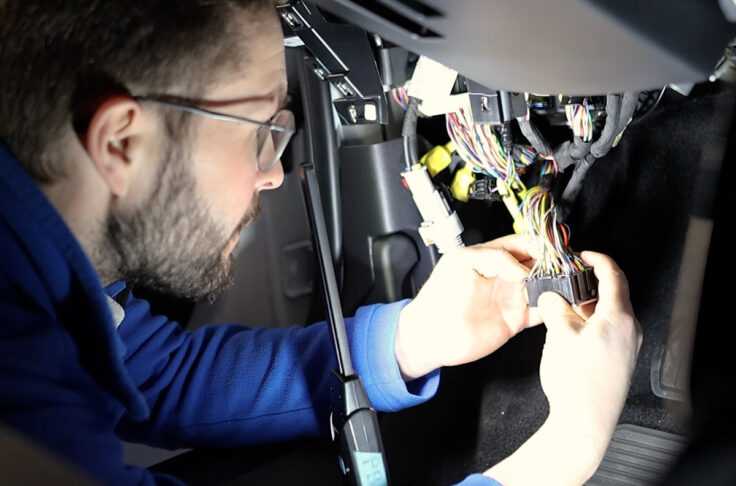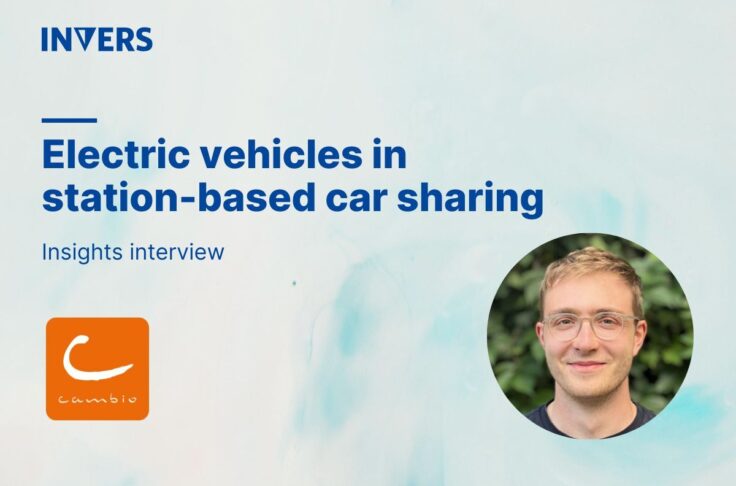The Next Stage in Peer to Peer Carsharing
Summary
Private vehicles sit unused most of the day, and peer-to-peer carsharing can make use of this excess capacity. In-car telematics can improve this sharing and provide more data for both the driver and the vehicle owner.

Private vehicles sit idle 95% of the time. If you think about it, this is a huge waste of a depreciating asset. Instead, people should join peer to peer carsharing, which is like Airbnb but for vehicles, where owners can rent out their vehicles and let others use it. And much like Airbnb, peer-to-peer carsharing is growing in popularity.
As with any new form of mobility, peer to peer carsharing, commonly referred to as P2P carsharing, has had its fair share of road blocks. Car rental companies are fighting to have P2P carsharing operate under the same regulations with the same taxation laws, insurance companies are slow to adopt P2P carsharing usage in their policies, and some vehicle owners are hesitant in joining the service.
Nonetheless, over the past few years, P2P carsharing has grown to almost 3 million registered users and over 125,000 registered vehicles, as owners get more comfortable letting strangers use their car, and drivers get more comfortable using a stranger’s car (Wall Street Journal).
Consumer demand plays a strong role in influencing the growth of new mobility like P2P carsharing. Consumers want more options, and even car manufacturers like General Motors are planning to start their own P2P carsharing service, Daimler is investing in Turo, and Toyota is investing in Getaround (The Verge).
With priority being placed on convenience on deciding how to get from A to B, there are opportunities for peer to peer carsharing to continue growing to meet this need. Just as technology played a role in enabling free floating and round-trip carsharing, it also has a vital role in further growing peer-to-peer carsharing as well.
Flexibility in Sharing
In a standard peer to peer carsharing set-up, vehicle owners are required to meet the driver in person to give her the vehicle key. This is a great way for the owner to gain a sense of trust that her vehicle is in safe hands, but it restricts the amount of time the vehicle is available for. If the owner needs to make time to meet the driver in-person, she may be less inclined to rent her vehicle if the process is too inconvenient. As a result, the number of vehicles available may not be enough to meet demand.
With hardware installed in the vehicle, the need to meet in-person is eliminated. Drivy already offers this with Drivy Open, and Turo recently announced their plans for new technology with Turo Go. In these new service offerings, in-car hardware enables keyless access, which literally means you can access the vehicle without a key.
For vehicle owners, this means they can make their vehicle available without having to meet with the driver in-person. For drivers, this would grant them faster access to vehicles; in Turo’s service, currently 19% of vehicle owners offer 1-hour rental lead time, the quickest time for them (CNET).
Be rest assured that with technology like INVERS’ Shared Mobility OS, keyless access does not make the vehicle vulnerable to theft. Vehicle immobilization prevents that, and the vehicle only drives if the driver is granted authorized access. According to August Grønli, Head of Operations at Nabobil:
“Technology is a great way to make sharing vehicles easier. At Nabobil, we wanted to give Norwegians more options to get around, and make the process comfortable.”
More Reassurances
In order to get more vehicle owners and drivers using peer to peer carsharing, operators need to bridge the adoption gap that commonly occurs before a technology-enabled service becomes a household topic. Considering personal vehicles are often underutilized, sharing them just makes plain sense.
Recent research also highlighted insurance policies being a barrier for vehicle owners joining the P2P carsharing service. Dealing with the complexities can be seen as a hassle for owners, in addition to their concern of damage potential (ITS Berkeley).
While having a piece of technology installed into the vehicle will not directly solve these concerns, it can mitigate some aspects. Specifically, the in-car hardware can assist peer to peer operators in providing their own insurance policies, which is typical of large car rental companies. With insights on vehicle usage and behaviour, dynamic insurance policies can be created to provide the coverage needed based on who is driving the car. Any damage claims would have more trip data to work with as well.
Feature Strong
Shared mobility is a growing, dynamic space, making it more important for peer to peer carsharing operators to constantly improve the service and experience of both their drivers and vehicle owners. One way to do this is by taking advantage of the API that comes with some in-car hardware.
With our Shared Mobility OS’ comprehensive API, peer-to-peer operators can enhance the service with additional features. For example, trip fee structures can reflect the actual vehicle usage time – a higher rate for when the car is being driven, and a lower rate for when the car is parked. Or, fees can be based on mileage driven. You could also give a credit to the driver if she fills up the gas tank.
The API also enables third party integrations that can improve vehicle owner and driver security. After a reservation is made, a credit check can be done of the driver to make sure there will be no payment defaults. If there is no credit, the driver will be prompted to check his payment, and the trip won’t start until the payment is updated.
With vehicle telematics and immobilization under the control of in-car hardware, there are numerous possibilities on how to expand the scope of P2P carsharing features available.
P2P Carsharing Growth
So far, research has found that P2P carsharing encourages the use of alternative transportation options (ITS Berkeley). At the same time, this new mobility service gives users additional mobility options to supplement other forms of getting around.
There are many opportunities for peer to peer carsharing to grow, whether that be in size within current cities or expanding to untapped markets. In either case, P2P carsharing needs to give consumers access to mobility at their fingertips, while making sure the process is convenient for both the driver and the vehicle owner.


